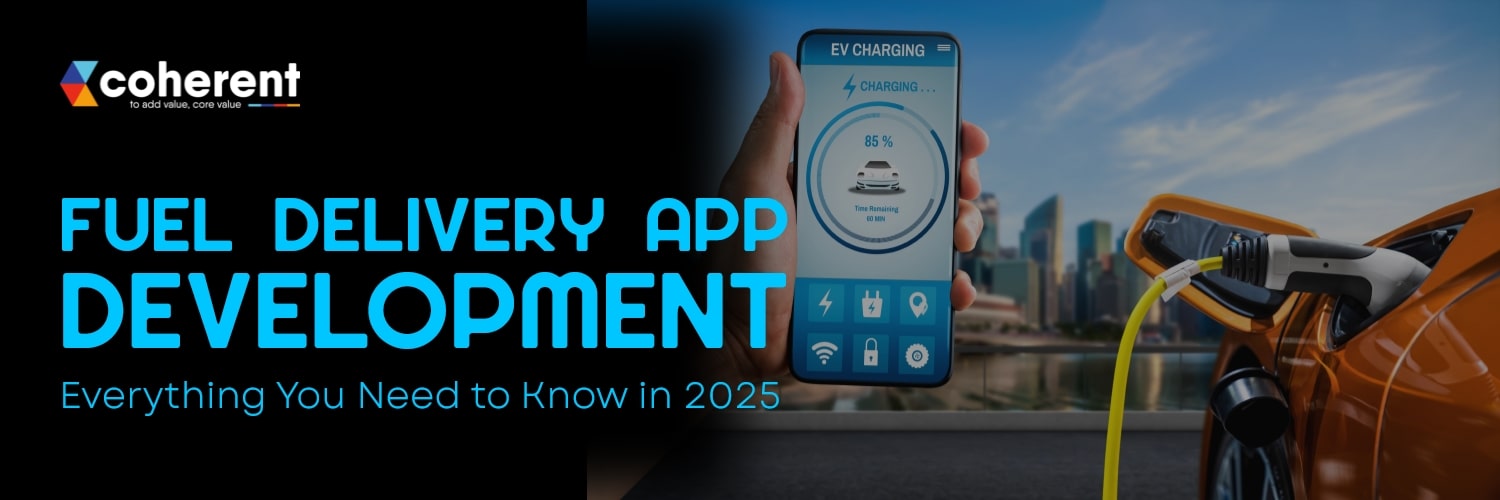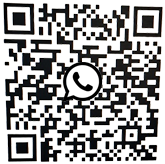Fuel Delivery App Development: Everything You Need to Know in 2026

On-demand fuel delivery apps are revolutionizing the global fuel consumption landscape. By 2026, these smart, app-based services are expected to redefine how individuals and businesses refuel, offering convenience, safety, and time efficiency like never before. With just a few taps on a smartphone, users can order fuel anytime, anywhere, eliminating the hassle of visiting traditional gas stations.
According to recent industry insights, the global fuel delivery app market has witnessed a 45% surge in users over the past two years and is projected to reach $5 billion by the end of 2026. This growth is fueled by rising urbanization, hectic lifestyles, and the demand for contactless, on-demand services.
As a leading fuel delivery app development company, we are empowering businesses to meet these evolving customer expectations through innovative, AI-driven, and scalable digital solutions, making refueling faster, safer, and smarter than ever before.
Market Overview & Trends in 2026
By 2026, the global market for applications involving on-demand fuel supply is growing quickly. With a current valuation of over $3.2 billion, the global market is expected to increase at a compound annual growth rate (CAGR) of about 18 percent over the following five years. This market necessity is being driven by a number of major variables. Initially a major contributing aspect is the growing emphasis on time-saving and simplicity, especially in crowded urban settings. Second, the expansion of e-commerce along with demand-driven offerings across several industries has enabled a growing acceptance of fuel delivery as a cost-effective option too. Additionally, a major factor propelling the market's expansion is the requirement for effective fuel management in corporate production as well as the transport sectors.
Benefits of Fuel Delivery Apps
Fuel delivery apps provide businesses and consumers a lot of benefits with unmatched convenience. The following are some advantages:
For end users
Apps for fuel delivery provide unparalleled simplicity. The customers can buy fuel from the comfort of their homes or workplaces rather than having to travel to a petrol station and wait in line too. This saves a significant amount of time which is especially helpful for people who lead busy lives or live in remote areas with limited access to gas stations too as well.
For fuel providers
These applications significantly improve operational effectiveness. Digital order management speeds up the shipping process and minimizes documentation. Because providers can serve clients outside of the geographical limits surrounding their geographical stations, a broader reach is accomplished. Better focussed marketing campaigns and more effective inventory control are made possible by the app's data collection, which offers useful information about demand patterns and customer habits.
Read More: Everything You Need to know About On Demand Gas Delivery Application
Key Features of Fuel Delivery App Development
The main key features that needs to be included in the fuel delivery app consist of:-
User Registration & Profile Management
Users can build and handle their own profiles, comprising vehicle details along with recommended delivery places, through simple and safe registration processes. Whenever a vehicle's registration or desired location for delivery shifts, accounts could be adjusted. The service ensures that user information is protected and stored securely too.
Location Tracking & Fuel Ordering
We have GPS-based position tracking to ensure precise delivery. Subsequently, it needs to be simple for users to choose their chosen delivery time slots and type of fuel along with amount. This makes it possible to arrange routes optimally for speedier delivery. In accordance with their regular usage, clients might additionally establish repeating fuel delivery times.
Payment Integration
There are safe and easy connections with a variety of payment methods, such as virtual wallets, credit or debit cards and maybe in-app credit systems. Instant authorization of payments and, if available, rebates or reimbursements should be supported by the software. Users can also save their preferred payment methods for future use.
Real-Time Order Tracking
Users can get notifications on the delivery vehicle's expected time of arrival (ETA) and track its exact location in real time too. Users are notified of any changes or disruptions via text messages or push notifications. This feature increases openness and fosters service trust.
Order Records & Bills
A comprehensive record of previous orders, complete with information and printable bills for convenient cost control, should be there. Order history might be filtered by shipping address, type of fuel or dates. Both people and corporations can track their expenses with the use of these records.
Steps for Fuel Delivery App development
A systematic and detailed approach is necessary to create an effective app in 2026:
Conduct market research
Evaluate the regulatory environment in the operational location, understand client desires and difficulties, discover important opponents, and do a thorough analysis of the target market. The special value concept and set of characteristics of your app will be influenced by this research.
Establish Your Business Model
Establish your pricing plan, operating model, and income sources such as commissions per delivery, recurring payments, and premium solutions. For e.g., you can build a model for in-house transport vehicles or for relationships with present fuel providers.
Choose the Essential Features
Determine which features are most important for your MVP according to your business plan and market study. Pay attention to features that meet the most important needs of users. Prioritizing important features guarantees faster expansion, a quicker beginning, and insightful early customer feedback.
Plan the Tech Stack
Identify the right platforms to support the front-end (user experience), back-end (records and server-side functionality), location services, interaction with payment gateways as well as real-time communication of the application. Think about reliability, safety and adaptability. Make sure that your desired mobile app development company in USA has real-time monitoring and logistical knowledge.
Create the MVP
Create a working, core-featured version of your application. Before spending money on more sophisticated features, you may use this to evaluate your business model, launch swiftly, and get feedback from actual users. Depending on your desired platform, think about collaborating with an Android app development company in USA too.
Maintain Safety and Compliance
Observe all relevant laws when it comes to the distribution, handling and shipment of fuel. Put strong safety measures in place for both the actual delivery procedure and the app. This also includes data privacy and secure payment processing.
Conduct Thorough Testing
Perform comprehensive testing, comprising user acceptance testing (UAT), integrating tests and functional testing at every step of development. As a mobile app development company in USA, we also assist in finding and addressing bugs, guarantee performance under different load scenarios and check for security flaws.
Launch and Marketing
Create a thorough marketing plan to spread the word about your software to your intended user base. To promote new customer acquisition, make use of social media, digital advertising platforms and even collaborations. A solid marketing strategy is crucial for anyone unsure about how to start a mobile fuel delivery business.
Also Read: Automotive App Development: Transforming the Future of Mobility
Challenges in Fuel Delivery App Development
The problems of creating and running a fuel delivery app are as follows:
Compliance with Safety and Regulations
It might be challenging to navigate and follow strict laws pertaining to transportation, safety requirements and fuel handling that differ from one area to another. Serious fines or service interruptions may result from non-compliance. Maintaining compliance with local laws requires regular upgrades and legal examinations.
Real-Time Monitoring & Reliable Delivery
It might be technically challenging to guarantee precise pickup timings and effective continuous surveillance of delivery vehicles, but doing so is essential for user happiness. Transparency may be ensured with automatic notifications, telematics technology, and improved GPS.
Managing Inventory and Fuel Condition
Reliable solutions are necessary to effectively manage inventories across several delivery trucks and storage spaces, as well as to preserve the high standard of the fuel that is delivered. To find contaminants or problems, quality control methods along with monitoring equipment, need to be in place.
Logistics & Route Optimizing
It takes complicated calculations and real-time modifications to optimize shipping paths in order to save travel time and money while guaranteeing on-time delivery. Performance can be greatly enhanced by AI-powered tracking of traffic and routing preparation. Faster shipping, less fuel consumption and cheaper operating expenses result from this.
Conclusion
At Coherent Lab LLP, the market for on-demand fuel delivery apps is expected to continue to develop and innovate in 2026. The advantages of ease, productivity, and cutting-edge technology are driving broad adoption even though obstacles like logistics and regulatory compliance still exist.
As a seasoned Android app development company in USA, we are prepared to assist companies in creating reliable and cutting-edge gasoline distribution systems. Integrating fuel distribution alongside the evolving mobility landscape is going to prove crucial in the future. Smart city connections and sustainable fuel supply methods would develop the impact of environmental as well as urban effectiveness. Discovering these ideas requires collaborating with an appropriate research team, and Coherent Lab LLP as an iOS app development company in USA, is prepared to take the initiative.
Frequently Asked Questions (FAQs)
Q1. Is it legal to deliver fuel via an app?
Ans. Yes, delivering fuel through an app is legal in many countries, including the USA and India. However, businesses must strictly comply with local, state, and federal regulations. Proper licenses, permits, and safety certifications from transportation and fire authorities are essential to ensure lawful and secure operations.
Q2. What is the typical timeframe for developing a fuel delivery app?
Ans. Developing a fully functional fuel delivery app generally takes 4 to 6 months, depending on complexity, features, and platform (iOS/Android). Projects with advanced technologies like AI, IoT, or third-party integrations may require additional time for testing and optimization.
Q3. Can small businesses enter the fuel delivery market?
Ans. Absolutely! Small businesses can enter this growing market by focusing on niche sectors like construction, logistics, or agriculture. Success depends on adopting efficient delivery technology, maintaining strong local customer relationships, offering competitive pricing, and adhering to all safety and compliance standards.
Q4. Is the fuel delivery business profitable?
Ans. Yes, fuel delivery can be highly profitable with a smart business model. The demand for on-demand fuel services is growing rapidly due to urbanization and convenience needs. With efficient logistics, proper licensing, and tech integration, startups can achieve high ROI and recurring revenue from fleet and individual clients.
Q5. What are the key safety protocols for fuel delivery?
Ans. Safety is paramount in fuel delivery operations. Key safety measures include:
-
Using certified fuel containers and vehicles.
-
Employing trained drivers and staff for fuel handling.
-
Implementing GPS tracking and emergency shutdown systems.
-
Complying with hazardous material transport regulations and environmental standards.


 +91 774-202-1725
+91 774-202-1725
 +1 (945) 3387904
+1 (945) 3387904
 business@coherentlab.com
business@coherentlab.com +49 15223341304
+49 15223341304 UK
UK

